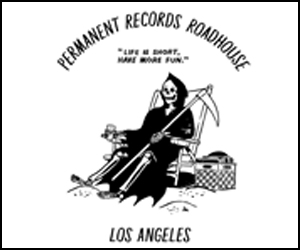Video: Nobuko Miyamoto, ‘Black Lives Matter’
Kevin Bronson on
0

Los Angeles native Nobuko JoAnne Miyamoto is a dancer, musician, teacher, author, activist and all-around creative force. She is 80 years old, and, among her many exploits, she danced on Broadway in “Flower Drum Song” (1958) and in the film version of “West Side Story” (1961), toured extensively playing protest music in the 1970s as one-half of the folk duo Chris and Jo, and eventually founded the multicultural arts organization Great Leap.
Miyamoto’s music upholds the great folk traditions of story- and truth-telling, and over the years it has been informed by her experience as an Asian American child in the era of WWII concentration camps and later personal history that combines the Asian and Black experience through motherhood and marriage.
Now, almost five decades after “A Grain of Sand: Music for the Struggle of Asians in America,” a 1973 release widely recognized as the first album of Asian American music, Miyamoto will release a new album “120,000 Stories” (Smithsonian Folkways) and the book “Not Yo’ Butterfly” (UC Press) later this year.
In late June, the artist unveiled a video, produced by Artivist Entertainment, for the song “Black Lives Matter.” The song was written not in the current upsurge in activism focused on racial inequality, but in 2015. Produced by Derek Nakamoto and Grammy winner Quetzal Flores, the song features Miyamoto on piano, backed by bassist Juan Pérez, drummer Abe Lagrimas, Jr., saxophonist Gerald Albright and backing vocalists Asiyah Ayubbi, Nancy Sekizawa, Carla Vega, Lynne Fiddmont, Valerie Pinkston and Lamont Van Hook.
Miyamoto shares the history of the song:
“This song is dedicated to my husband Tarabu and his mom, Mamie Kirkland. It is an homage to the Black Lives Matter movement that continues to struggle against the systemic violence against Black people.
“Having Mamie live in Los Angeles with us during the long winters of her home in Buffalo, N.Y., was a gift that put me next to a century of Black history. When Mamie was 107 years old, Tarabu took her back to Mississippi, 100 years after her family had fled the direct threats on her father by the Ku Klux Klan. I stood on the very spot in Ellisville, where his friend John Hartfield was lynched before 10,000 people. I wondered, what kind of hate did it take to do this to another human being?
“Mamie overcame her childhood fear and became a symbol of courage as a lynching survivor. I was honored to accompany her to Montgomery, Ala., for the opening of the National Lynching memorial [where the artist shot some of the images and footage used in the “Black Lives Matter” video]. She died at 111, a spirit of resilience and pure love. Mamie taught me our lived stories are important to share, and you are never too old to be relevant!”
||| Watch: The video for “Black Lives Matter”




Leave a Reply